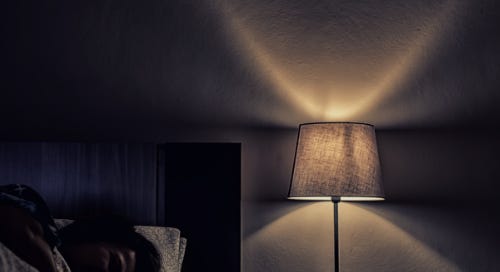Lights Out for Heart Health
In this edition of The Rundown, moderate light during sleep harms your heart, lifelong exercisers have healthier muscles and apps make your Apple Watch a better fitness tracker.
The Rundown
Lights Out. We all know that maintaining a consistent fitness routine contributes to your heart health and now a new study suggests that turning off all lights while you sleep may be just as important. The research found that exposure to even moderate ambient light during nighttime sleep harms your cardiovascular function during sleep and increases your insulin resistance the next morning.
For the study, researchers from Northwestern University’s Feinberg School of Medicine separated 20 healthy young adults into two groups that spent two nights in a sleep laboratory. One group slept under dim light (less than three lux) for consecutive nights. The other group slept under dim light for one night and under moderate light (100 lux) for one night.
The team found that there was an increase in the overnight heart rates of the group exposed to brighter light while they slept, which over time could result in declining cardiometabolic health. They also detected an increase in this group’s insulin resistance, a result that may offer clues to observational studies that have linked nighttime light exposure to higher rates of diabetes.
Phyllis Zee, a senior author of the research, said the results show how moderate light can lead to physiological changes that are not immediately subjectively noticeable. Her advice is to keep night lights as dim as possible and avoid white or blue night lights because they are potentially more stimulating.
Exercise for Life. If you need more motivation to exercise your way into healthy aging, researchers from the University of Copenhagen, Denmark have found that elderly people who are physically active throughout their adult life have healthier aging muscle that both functions better and is more resistant to fatigue than inactive people, both young and old.
The study divided 46 male participants into three groups: young sedentary, elderly lifelong exercise and elderly sedentary. Each group performed a knee extension movement to evaluate muscle function. The researchers measured the amount of force produced, and took blood samples and muscle biopsies from both legs. The results found that elderly lifelong exercisers outperformed both the elderly and young sedentary adults. Specifically, they had a greater number of muscle stem cells or satellite cells in their muscle. These cells play an important role in muscle regeneration and long-term growth, and protect against nerve decay.
Lead author Casper Soendenbroe noted that previous studies of this kind have mostly focused on master athletes. This research however, is more representative of the general population aged 60 and above who are more likely to participate in various activities (whether that’s resistance exercise, ball games, racket sports, swimming, cycling, running and/or rowing) at a moderate level.
Soendenbroe added, “The single most important message from this study, is that even a little exercise seems to go a long way, when it comes to protecting against the age-related decline in muscle function.”
Apps for Apple. If you’re looking to elevate the fitness tracking capabilities of your Apple Watch, here are a few apps to get you there. For running, there’s iSmoothRun, which allows you to create and track custom workouts based on time or distance intervals, or your heart rate. It also lets you configure your Apple Watch to display more than five metrics.
For triathlon training, Triathlon Tracker allows you to mark your transitions between disciplines by tapping both side buttons instead of touching the screen. In the gym, Strong gives you the ability to log all your exercises, reps and sets, without your phone and Seconds Pro lets you create easy-to-read custom timers for all those HIIT workouts. In the great outdoors, WorkOutDoors, adds vector maps to your Apple Watch that can be stored for offline use. You can also add a GPX route to follow as you’re hiking, running or skiing to keep from getting lost.
Replay
This week’s vintage moment in fitness culture is brought to you by the 1940’s. “Girls, it seems that after you’ve helped to win the war, you’ll still have another battle on your hands and legs and things—The battle of the bulges…”



